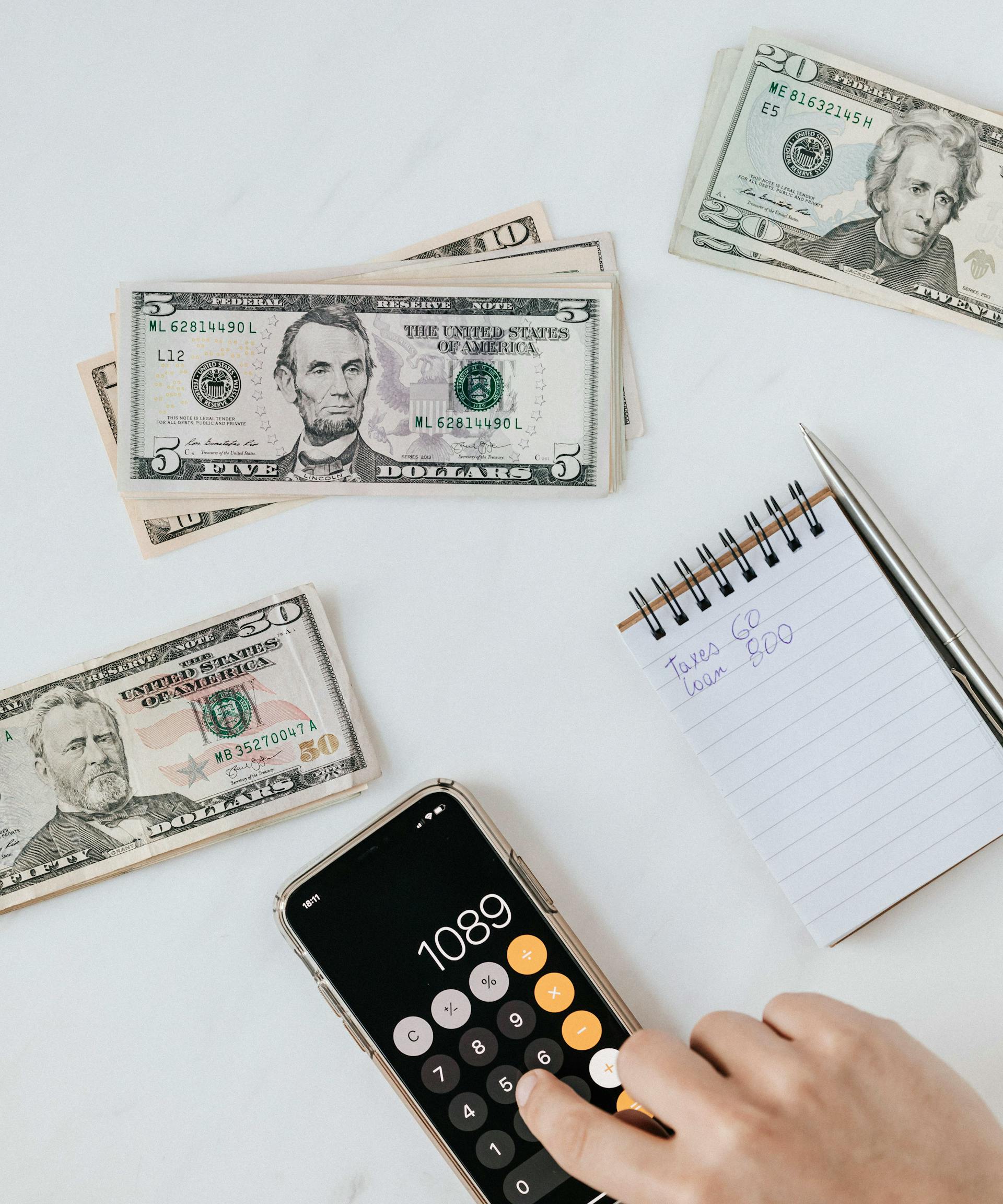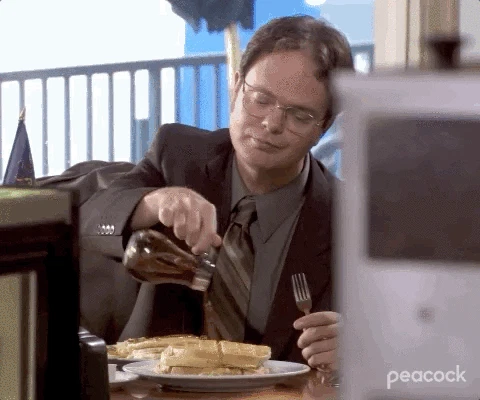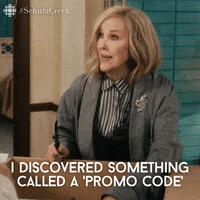How I Paid Off $20,000 In Debt The Year Before I Got Married
By the age of 30, the average millennial will be $115,784 in debt. That number increases to $154,658 for Gen Z. Here’s how you can pay it off.

When my husband and I reached that “talking about marriage” level in our relationship, I knew it was time to buckle down and address my finances. My goal was to enter into marriage with as little debt as possible. It’s important to address or at least acknowledge the baggage that we might bring into marriage, and my poor financial choices were something I finally had to face. Thankfully, unlike 62% of Gen Zers, this wasn’t a dealbreaker in our relationship.
Given that my boyfriend hadn’t touched his school loans in years, had no idea if he had a retirement account, and had never owned a credit card, I knew that I would take the lead on finances in our marriage, but I didn’t want to wait to set us up for financial security and freedom. So, the year before we got married, I paid off $20,000 in debt. Here’s what worked for me.
Breaking It Down into Bite-Size Snacks
To start, I consumed financial guru Dave Ramsey's content like it was my job, particularly his podcast. Hearing the success of others not only motivated me but made me believe becoming debt free was actually realistic – and one of the big things he preaches is the importance of being debt free. I don’t agree with everything Ramsey says, which I’ll spell out below, but if you’re just beginning this journey, he’s a great place to start. One of the ways many people start tackling their debt is with something called the snowball method, but here’s the thing – you have to make it work for you.
So, let’s talk numbers. A year before getting married, I had $37,000 remaining from student loan debt, the majority from grad school. Let me say upfront that the way I handled loans during grad school was the worst financial decision I ever made. I didn’t bother looking into scholarships or grants and took out loans like they were on sale. (Girl Math would be: loans = free money.) That $37,000 was broken into seven different loans of varying costs.
The snowball method is simply tackling either the lowest loan or the loan with the highest interest rate first, and paying extra on that specific loan until it’s paid off, while you continue making the minimal payments on your other loans. Once that loan is paid off, you roll the money you were putting toward it to your next one, likely motivated by that sweet, sweet high that only comes with financial freedom.

This method is way better than putting, say, an additional $100 down on your student loans, dispersed seven ways. You’ll barely see any progress if you do it that way!
Sometimes, You Just Need To Rip Off the Band-Aid
Some consultants will advise you to go slow and steady. Not me. I didn’t want to approach my loans at a snail’s pace – I had a wedding to plan! I had a decent savings, and if I already had the money, I wanted to hit my loans with a few fierce punches to knock them out. Plus, I’m an impatient person.
For me, that looked like dropping $300 extra on one of my loans that was on deck in the snowball lineup, panicking for a second, and then moving on with my life. Or pretending my Christmas bonus was already designated for my loans. Yes, it hurts putting large chunks down, but guess how quickly you forget about it and move on with your life? Answer: fast. Guess how much that $300 actually impacts your day to day? Answer: not much.
If it’s between that chunk of money sitting in your savings doing nothing or putting that on a loan, choose the latter.

The thing is, when we get a raise, our lifestyle expenses creep up on us and we adjust to that raise real fast. We find ourselves wondering, “How did we ever make it before our raise?” It works the same in the other direction: If you put an extra $100 on a loan monthly, you’ll get used to it real fast. So many of us think we don’t have the money to put into retirement or extra cash to put on a loan, but the honest truth is, you do. You just don’t want to do it.
If you have the money, just close your eyes, hold your breath, and drop it like it’s hot. You’ll thank yourself tomorrow.
The Best Way To Save Money Is Not To Spend It
Here’s the thing – I don’t believe in budgets. Why? Because budgets are supposed to be about categorizing needs and wants, but if we’re honest, we can justify what we may “need” pretty spectacularly. You need a pair of nude heels for your bridesmaid dress. You need to get drinks with your girlfriend because she’s going through a hard time. And so on.
Instead of wasting my time budgeting, I roughly map out my “non-negotiables.” What are you not willing to compromise on? For me during my single years, it was having my own apartment. It was really important to me that I not have a roommate, but I had to “pay” for that – literally and figuratively. What I was willing to compromise on was my grocery budget. For a straight year, I pretty much ate peanut butter sandwiches for lunch and pancakes for dinner.

Other non-negotiables would include monthly expenses like your phone bill, insurance, monthly savings, minimum payments on loans, etc. By jotting these down, it will give you an idea of how much to shoot for in spending because, ultimately, the number one best way to save money isn’t by budgeting or couponing or hustling – the best way to save money is simply by not spending it.
Helpful hint: Treat your credit cards like debit cards. Pay them off immediately, but if you don’t have the cash on hand to buy it, do not put it on credit. Credit debt is the dumbest debt (because, yes, some say there’s such a thing as good debt and bad debt).
Pay Yourself First
Here’s the first place where Dave Ramsey and I disagree. Ramsey argues that we should attack our debt and forgo any form of savings (aside from an emergency fund) until we are debt free. I think you are worth more than your debt and should always put yourself before your finances.

So here’s what I did: I set up automatic payments the same day I received my paycheck, and I allocated an amount that would immediately transfer to some savings funds. (The golden rule is to put at least 10% of your income into some kind of savings account.) Every month, I designated a certain amount that went into my next car savings fund, a mutual fund, a taxes fund, an additional Roth IRA account, and an adoption fund.
How does this help pay off debt faster? It goes back to my previous point about saving money by not spending it. At the end of the month, after you have paid your non-negotiables and have paid yourself first, you’ll have a certain amount left over. From that pool of money, you can throw as much as you want onto your debt.
Be Cautious of Turning Passions and Hobbies into Side Income
Okay, so a huge way to pay off debt faster is by hustling. More than half of Gen Zers and millennials have a side hustle. It’s a great way to add some additional income by doing what you love. I’ve done everything from photography, web design, publishing books, sourcing advertisers, graphic design, you name it! $50 a month might not seem like a lot to throw at a five figure debt, but it is a lot when you can use that $50 to cover both your Mother’s Day gift and splurge on a latte.
But here’s what no one tells you when you monetize your passion: That can totally strip it of its joy. You may begin seeing something that you once loved in terms of finances. Last year, I discovered my love of gardening, and for a hot second, I was excited at the idea of selling little bouquets of flowers. “What a dream job to make money from flowers!” I thought. And then I hit the brakes real fast. Nothing was going to taint the utter beauty and joy I get from my garden.

Tip #1: The best kind of side hustle is one that brings in passive income. What that means is something that may require a lot of work upfront, but then turns into something that brings in a steady stream of income without much maintenance. For me, I designed a few workbooks and journals that took a lot of time, but once they were published, all I had to do was simply ship them out. Today, I still receive passive income for the work I put into these projects years ago.
Tip #2: Be wary of get rich quick side hustle schemes. If it sounds too good to be true, it probably is. Sites like SurveyJunkie and Inbox Dollars boast how you can get paid for simply filling out surveys or watching videos online. All I’ve ever gotten from these sites were a wasted two hours of frustration to make a quarter. There’s nothing rewarding or fulfilling in doing that kind of work. If you’re going to hustle, at least enjoy it.
Coupon Like Your Grandma’s Watching
Coupons aren’t a thing of the past, and nowadays it requires absolutely zero clipping, at least the kind I’m talking about. Get in the habit of googling for discount codes before purchasing something – anything – and you’ll be shocked at how much you can save. There are several companies that usually have standing discount codes that automatically give you 20% off your order. I regularly shopped at Michaels, Vistaprint, and Jiffylube (if you call that shopping), and each one always had easily accessible discounts online.

Get Creative
When I lived in Philly and my grocery budget was $35 a month, I had to get creative on ways to stretch my income. Those lifestyle decisions I made at the time have shaped the way I view savings to this day.
So, how can you stretch your savings?
Thrift. Thrifting has become a permanent way of life for me, and I loved it so much that it also became a side hustle that brought in over $3,000 during a time when I really needed some extra cash. I would hunt down vintage pieces, clean and stage them, sometimes repurpose them, and resell them in my little curated Etsy shop. Not to mention, nearly all of my wardrobe and decorations are from Goodwill.
Pay in alternative ways. When I showed up to my mechanic in Philly to get my car back (I had to walk 1.5 miles to the garage, mind you), I offered him zucchini bread. He was so touched that he waived the fee! That wasn’t my intention, but it taught me to view exchanges differently through a creative lens rather than just a straightforward exchange of goods (that particular time, baked goods).
Find free stuff. Sites like Craigslist and Facebook Marketplace have tons of free furniture. Most of the furniture in my apartment was free, and it all had so much character.
Barter. I would barter at markets by simply stating, “This is literally all the money I can offer you,” while holding out a $20 bill. When I bought my big girl mattress, I “haggled” the price down $300 by honestly stating with a sour stomach, “I literally can’t spend more than $500 on a mattress.”
Do free stuff. Many of my hobbies were free: running, working at the library instead of a cafe, sketching at museums, coffee and doughnuts after church, and so on. Check out local events in your area and mark which ones are free.

Know When It’s Time To Switch Gears
Okay, remember how I said Dave Ramsey preaches that we should pay off all of our debt before attempting any type of savings? If I had followed that advice, my life (and financial situation) would look very differently than it does today.
At some point, you may need to stop attacking your debt with a vengeance and shift gears. After paying off over $20,000 in debt before marriage, I still had about $12,000 remaining. You might be thinking: Why didn’t you keep going? Why give up the momentum? You could be debt free by now!
The answer is because my financial goals changed the closer we got to our wedding date. To put it simply – we wanted to buy a house and not rent. And to buy a house, you need to have at least some kind of savings for closing costs and possibly a down payment.
So, it was time to stop attacking debt and to build my savings back up a little bit. And thank goodness we gave ourselves the freedom to do so because buying our first home turned out to be the best financial decision we ever made. We unexpectedly sold it just two years later and made a $50,000 profit, which we were then able to put down on our dream home, paying the full 20% down payment to avoid that annoying PMI.
Another reason you might shift focus is because, after hitting your debt hard, your savings might be too low for comfort. How “low” that is looks different for everyone, though I agree with Dave Ramsey and most financial advisees that, on average, you should have at least six months’ worth of savings stored up in case of emergencies (like losing your job).

Closing Thoughts
Debt sucks. It’s debilitating. Finding financial freedom is worth all the grit it takes to kick that burden to the curb. Whether you owe $1,000 or $100,000, start taking incremental steps and celebrate the milestones you hit along the way.
Support our cause and help women reclaim their femininity by subscribing today.